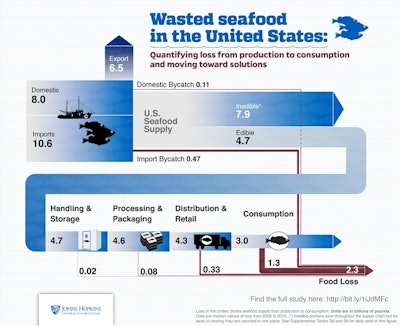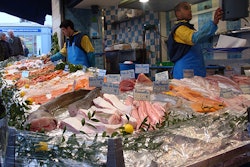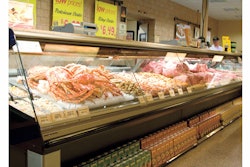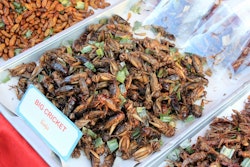
As much as 47 percent of the edible U.S. seafood supply is lost each year, mainly from consumer waste, new research from the Johns Hopkins Center for a Livable Future suggests, reported Hub, the university magazine.
The findings, published in the November issue of Global Environmental Change, come as food waste in general has been in the spotlight and concerns have been raised about the sustainability of the world's seafood resources. In the U.S. and around the world, people are being advised to eat more seafood, but overfishing, climate change, pollution, habitat destruction, and the use of fish for other purposes besides human consumption threaten the global seafood supply.
"If we're told to eat significantly more seafood, but the supply is severely threatened, it is critical and urgent to reduce waste of seafood," says study leader David Love, a researcher with the Public Health and Sustainable Aquaculture Project at the center and an assistant scientist at the Johns Hopkins Bloomberg School of Public Health.
The new study analyzed food waste by focusing on the amount of seafood lost annually at each stage of the food supply chain and at the consumer level.

















